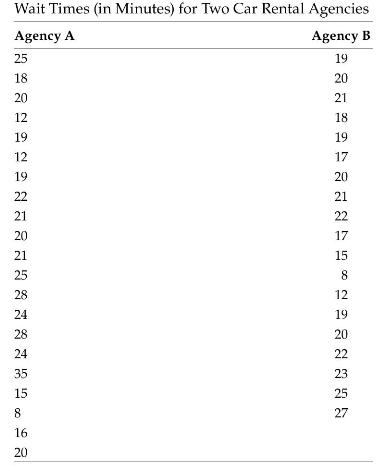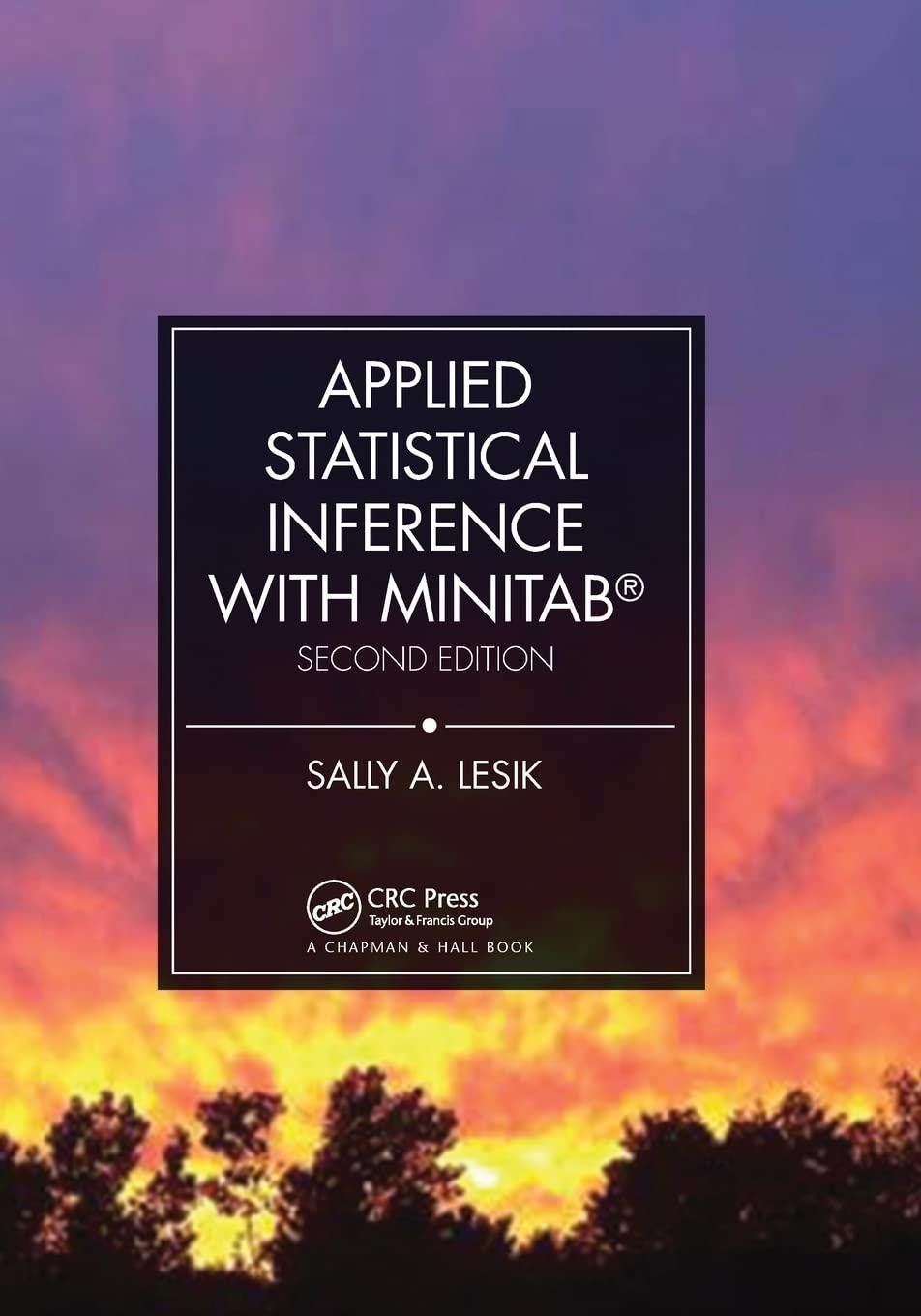We can also test whether two populations' means differ by some constant, (C). The procedure is similar
Question:
We can also test whether two populations' means differ by some constant, \(C\). The procedure is similar to testing whether two population means are different from each other; however, the possible null and alternative hypotheses are framed somewhat differently in that we need to include the difference being tested for:
\[
\begin{aligned}
& H_{0}: \mu_{1}-\mu_{2}=C \\
& H_{1}: \mu_{1}-\mu_{2} eq C \\
& H_{0}: \mu_{1}-\mu_{2}=C \\
& H_{1}: \mu_{1}-\mu_{2}>C \\
& \\
& H_{0}: \mu_{1}-\mu_{2}=C \\
& H_{1}: \mu_{1}-\mu_{2}
Assuming equal variances, the test statistic for comparing two means follows a \(t\)-distribution with \(n_{1}+n_{2}-2\) degrees of freedom:
\[
T=\frac{\left(\bar{x}_{1}-\bar{x}_{2}ight)-C}{s_{p} \sqrt{\frac{1}{n_{1}}+\frac{1}{n_{2}}}}
\]
where \(\bar{x}_{1}\) is the sample mean from the first sample, \(\bar{x}_{2}\) is the sample mean from the second sample, \(n_{1}\) is the sample size from the first sample, \(n_{2}\) is the sample size from the second sample, and \(s_{p}=\sqrt{\frac{\left(n_{1}-1ight) s_{1}^{2}+\left(n_{2}-1ight)}{n_{1}+n_{2}-2}}\) is the pooled standard deviation, which is used when we assume equal variances, where \(s_{1}^{2}\) is the variance from the first sample, \(s_{2}^{2}\) is the variance from the second sample, and \(C\) is the hypothesized difference.
If we assume unequal variances, then the test statistic would be:
\[
T=\frac{\left(\bar{x}_{1}-\bar{x}_{2}ight)-C}{S}
\]
where \[
s=\sqrt{\frac{s_{1}^{2}}{n_{1}}+\frac{s_{2}^{2}}{n_{2}}}
\]
The number of degrees of freedom can be found by rounding down to an integer:
\[
d f=\frac{\left(\frac{s_{1}^{2}}{n_{1}}+\frac{s_{2}^{2}}{n_{2}}ight)^{2}}{\frac{\left(s_{1}^{2} / n_{1}ight)^{2}}{n_{1}-1}+\frac{\left(s_{2}^{2} / n_{2}ight)^{2}}{n_{2}-1}}
\]
The data set in Table 5.21 presents a sample of the wait times (in minutes) for renting a car from two competing car rental agencies at a local airport.
Suppose you want to determine if Car Agency B is at least 5 minutes faster in renting their cars than Car Agency A.
a. Estimate whether assuming equal variances would be appropriate in this case.
b. Set up the appropriate null and alternative hypotheses.
c. Find the value of the test statistic.
d. Interpret your findings. Justify if you can claim that Car Agency B is at least 5 minutes faster in renting a car than Car Agency A.
e. How large of a sample would be needed to find whether Car Agency B is at least 5 minutes faster in renting their cars than Car Agency A provided that such a difference exists?
Table 5.21

Step by Step Answer:






